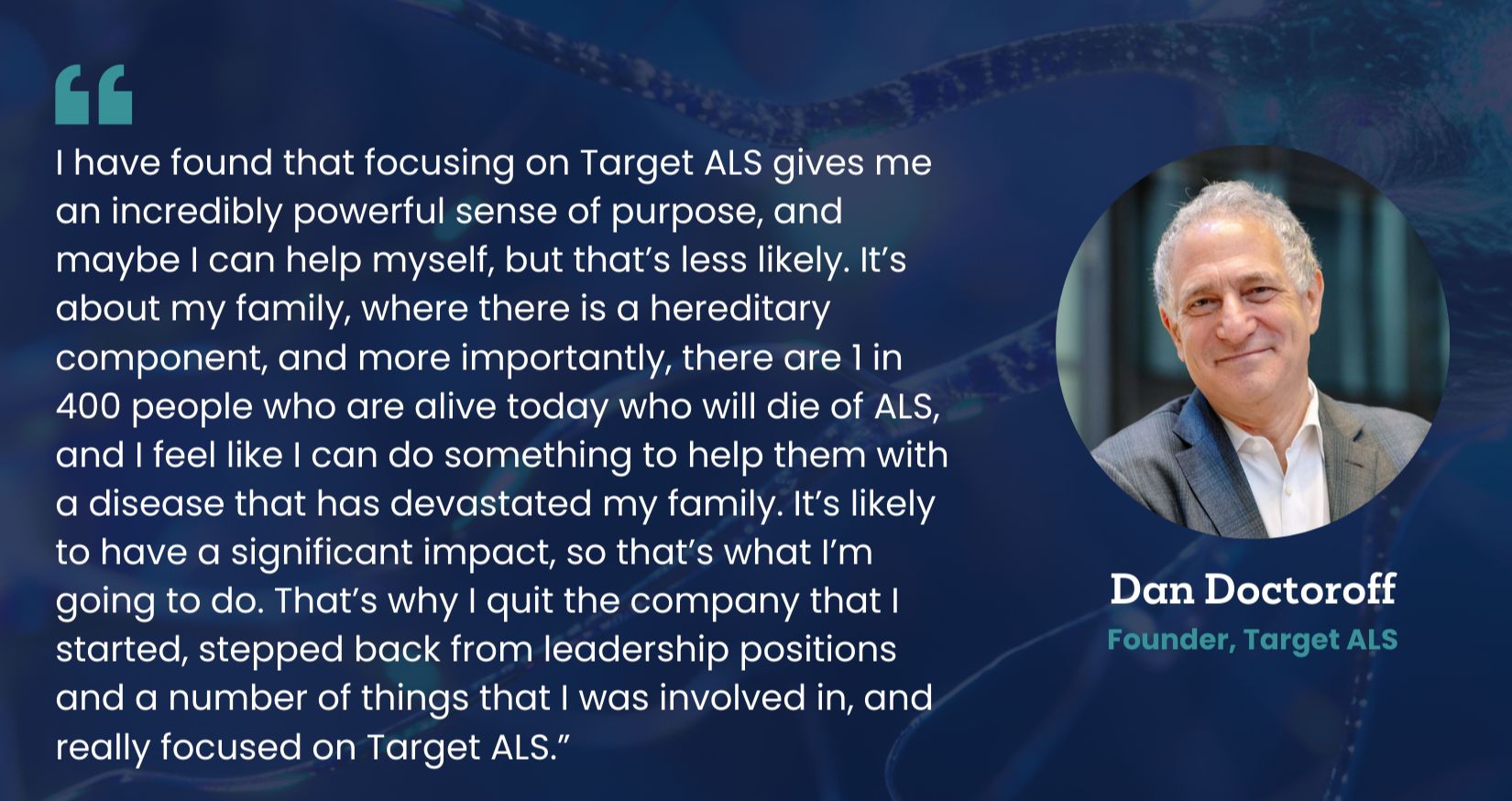For decades, ALS has been viewed as a disease that begins and ends in the motor neurons. But today’s scientists are challenging that narrow view, and thanks to new research funded by Target ALS, they’re revealing a far more complex picture.
At the heart of this shift is a powerful idea: to stop ALS, we need to understand what causes it at the most fundamental level. That means diving deep into the biology of the disease, identifying the hidden molecular pathways that go wrong, and uncovering new therapeutic pressure points that could slow or stop its progression.
From Neurons to Networks: A New Era of ALS Discovery
While the central nervous system remains a primary focus, Target ALS is broadening the lens. It supports research that goes beyond neurons; looking at the role of the immune system, metabolic disruptions, glial cells, and even peripheral tissues. The aim? To uncover overlooked drivers of ALS and discover drug targets that reflect the full complexity of the disease.
With the help of powerful tools like single-cell sequencing, spatial transcriptomics, and proteomic analysis, researchers are now able to map disease processes in unprecedented detail and in some cases, in individual cells.
Here are two examples of how this work is transforming what we know; and what we might soon be able to treat.
1. Rewriting the Role of the Immune System in ALS
Dr. David Gate and his team at Northwestern University are taking a closer look at how the immune system may contribute to ALS, not just as a bystander, but as an active participant in disease progression.
Using advanced genomic tools, his lab identified clonally expanded CD8+ T cells in people with ALS. These immune cells were not only more abundant but also showed distinct molecular signatures depending on whether the person had sporadic ALS or a genetic form linked to the C9orf72 mutation. That discovery adds another layer to our understanding of ALS heterogeneity and points toward immune activity as a potential biomarker.
The team also observed striking inflammatory changes in the spinal cord, including more macrophages and microglia (cells that act like the brain’s immune defense). At the same time, key neuron-supporting genes like STMN2 were reduced. The message is clear: inflammation in ALS isn’t just a reaction, it could be part of the cause.
2. When Glial Cells Go Rogue: TDP-43’s Hidden Impact
Another multi-institutional team is uncovering what happens when glial cells (the cells that support and protect neurons) begin to break down. Their work focuses on TDP-43, a protein known to misbehave in ALS.
By reducing wild-type (or healthy) TDP-43 protein in astrocytes and microglia (two major glial cell types), researchers observed DNA damage, disruptions in the cell cycle, and the buildup of harmful structures called R-loops, which interfere with normal gene transcription. These changes weren’t just a consequence of neuron death, they appeared before the neurons began to fail.
Using both postmortem human tissue and induced pluripotent stem cell (iPSC) models, the team is building a compelling case: glial cell dysfunction may be an early and active driver of ALS, not just a secondary effect.
💡 Key Take Away:
Together, these findings show that ALS is a disease of the entire cellular ecosystem, not just the motor neurons. By understanding how immune cells and glial cells contribute to degeneration, researchers are opening new paths for intervention; ones that could lead to earlier diagnoses and more personalized treatments.
Looking Ahead: Toward More Precise Therapies
This wave of basic science research, supported by Target ALS, is not just academic. It’s laying the foundation for a future where ALS treatments are tailored to the root causes of disease, whether that’s a genetic mutation, immune dysregulation, or glial dysfunction.
By investing in the fundamental biology of ALS, we’re getting closer to something that once felt out of reach: therapies that don’t just manage symptoms, but stop ALS at its source.




